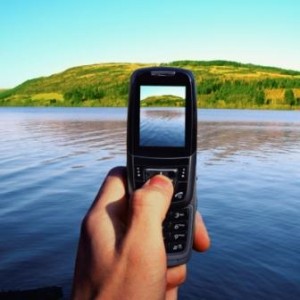In this day and age of YouTube, digital videos are quickly becoming everyday sustenance for most people of the world. It is easy to say that most video for avid fans of the paranormal, cryptozoology and UFO’s will be seen on the Internet with absolutely no credible parties validating these videos. As having said before in previous articles, video’s should be taken to professionals to be validated and thus prove their authenticity. Only then should they be released to the general populace. That will not happen anytime soon, so what should we look for when debunking video?
The initial article I saw was from a Professor Hany Farid of Dartmouth College. Professor Farid is considered to be the foremost authority on photographic and video forensics, and is pioneering the development of software to detect video tampering. This article will reference Professor Farid’s work and observations.
The initial thoughts towards videos we see is either that it’s plausible, hoaxed or fake. I have spent many hours scouring the Internet for ways to fake video from cellphones, web-cams and surveillance camera’s and found little. Either it is an art, or it doesn’t exist. As if to verify this, the following link ( Cnet News) has Professor Farid commenting on video forgeries “Audio is not that difficult to tamper with. Our auditory system is fairly forgiving,” Farid said. “Video is very hard to tamper with. The tools to tamper with video are not as sophisticated as those for photos, but we might as well get a jump on it.” Mind you the link is from two and a half years ago. In a article on The Digital Journalist from February 2008, Farid reinforces this fact:
Q. This is not an afterthought, but with video in the ascendancy, especially on news Web sites and broadband in general, what must we look at to make sure what we are seeing in any video is honest?
A. We have recently developed tools to detect tampering in video. Although it is decidedly harder to tamper with video, it is also harder to analyze because of the sheer volume of data from even a short video. In addition, because of the relatively fast frame rate at which video is displayed, it can be hard to visually detect any static inconsistencies. In addition to continually developing new image forensic tools, I see video (and audio and scanned document) forensics as an important frontier in digital forensics.
The tampering of digital video appears to be on the rise though, as of late. As noted in a recent abstract from Farid: “Popular websites such as YouTube have given rise to a proliferation of digital video. Combined with increasingly sophisticated users equipped with cellphones and digital cameras that can record video, the Internet is awash with digital video. When coupled with sophisticated video editing software, we have begun to see an increase in the number and quality of doctored video. This technology is impacting nearly every corner of our lives, from the courts to the media, politics, business, and science. As this technology continues to evolve it will become increasingly more important for the science of digital forensics to keep pace.”
Now it should be noted that much of this article relates to the tampering of videos, not the hoaxing of videos. Video’s such as the Cowboy Ghost definately fall into the realm of hoax whereas the cowboy ghost in the pub might not. The difference being that the initial video was filmed in a still environment with more than likely some sort of effect added at the source, where the ghost in the pub has camera motion that causes difficulties in editing. Per an abstract from Professor Farid: “Sophisticated video editing software allows for objects and people to be added to complex and dynamic scenes. The camera motion can be estimated from individual objects or people in a video and any inconsistencies in camera motion are evidence of tampering.”
In closing, you should be noted that much of Farid’s work dealt with the tampering of photo’s. Many of his articles plainly state not to trust photographic pictures due to the availability of photo editing software. In this article, Farid makes some observations of photo’s taken with cellphones and a handy rule of thumb “When you look at images, you should think about, “How hard would this be to do?””
Read some of his papers and abstracts along with the articles at the bottom of his page at Dartmouth College, for it is an interesting read.





